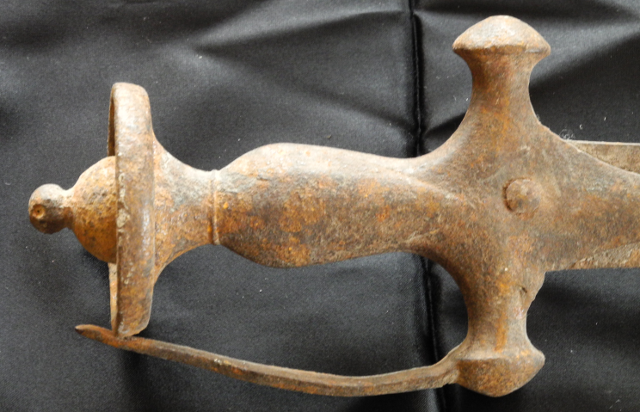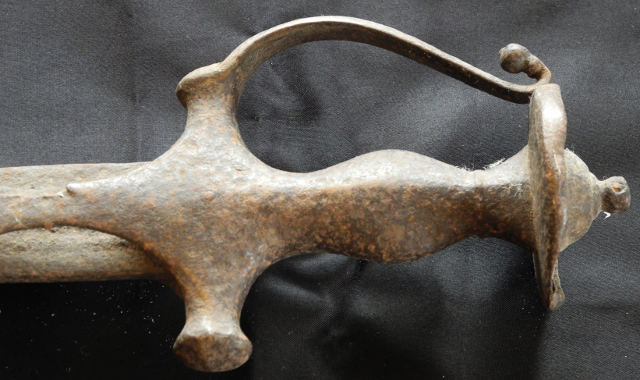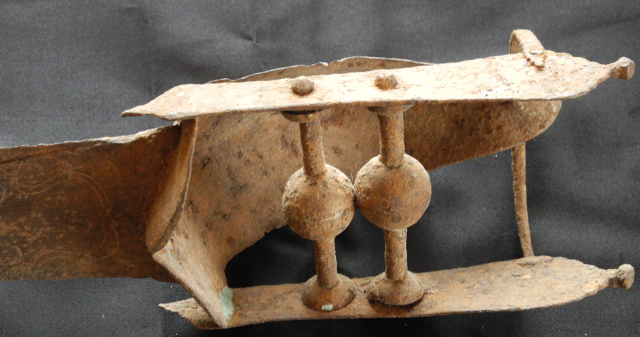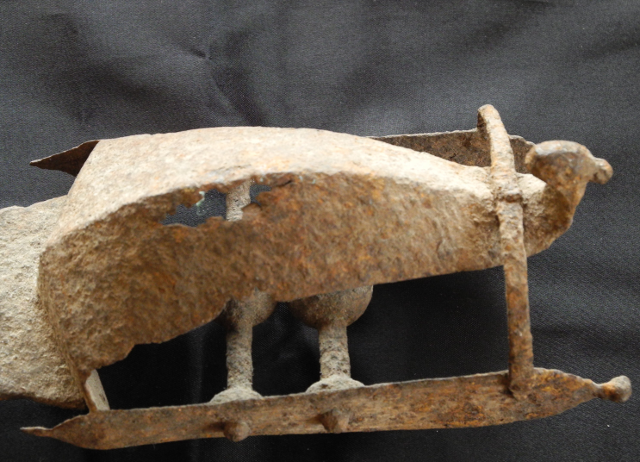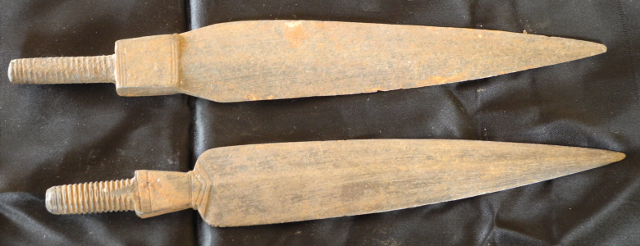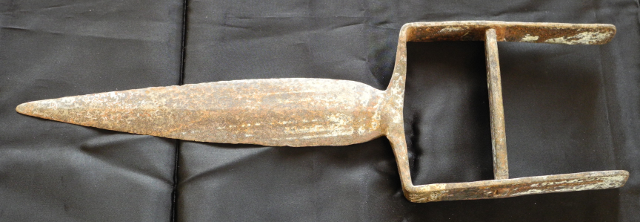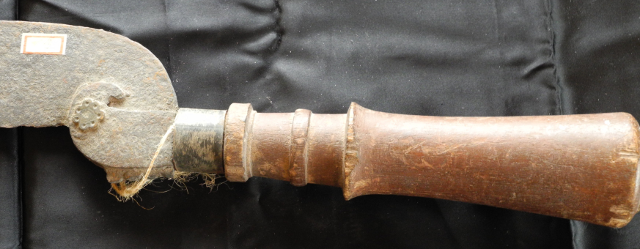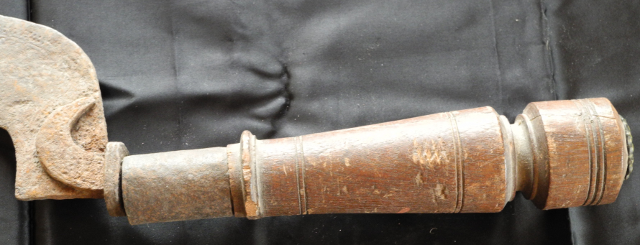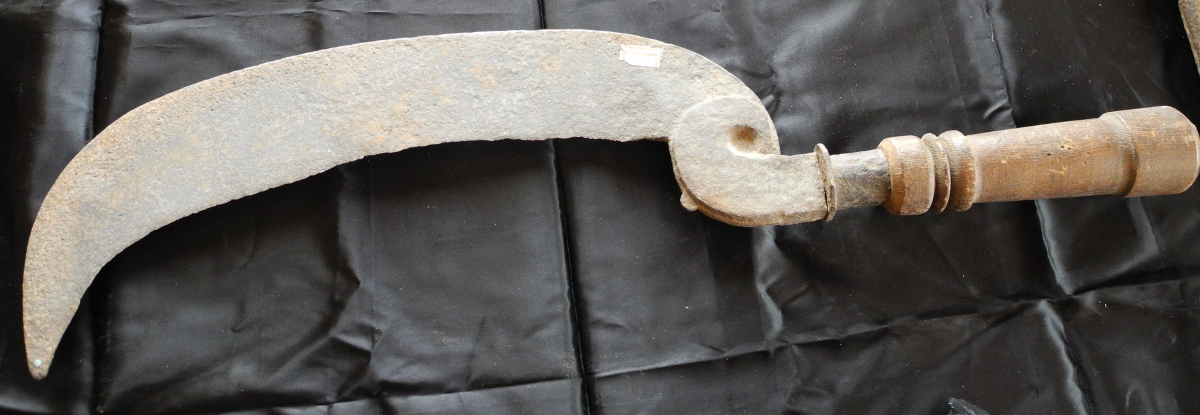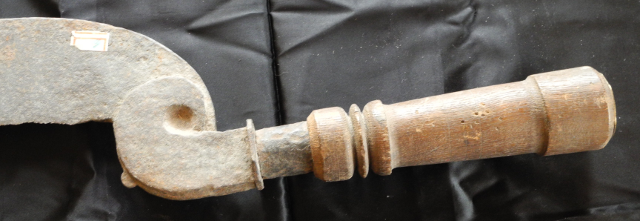Traditional weapons of the Indian Warrior
India daggers and swords form a significant part of the rich heritage of Asian weaponry. Extremely popular until the demise of the Princely States under British and then India rule the swords and daggers were important parts of a courtiers dress and swordsmanship was practiced as both a skill and a prestigeous sport. Although the museums of India contain numerous examples of Indian weaponry the Hermitage in St. Petersburg and the Victoria and ALbert Museum in London contain some of the better examples. In my home town of Darlington, England there was a wonderful collection which I spent many hours studying during my youth. Our weapons collection is from the ancient capital of Tamil Nadu - Thanjavore. All of our Tamil Nadu weapons were found buried under the earthen floor of the cellar [dungeon] of the Maharaja of Thanjavore's Palace. Our source believed they are no later than 17th century. The sword was no longer used by the infantry after the 18th century, although it continued to be used by the cavalry.
We purchased our weapons from an antiquarian who also was the Chief of Police of Thanjavor, and a friend of the Maharaja's. The story behind their rust is that they were buried during a period when all arms had to be surrended to the government. Many weapons were buried by those who did not want to comply. Ours were dug-up in the 20th century and we purchased approximately half of the available collection. From the time of purchase until recieving the collection in the USA it took 4.5 years to get the necessary permissions to export these items.
The ideal method of displaying these weapons is in a fitted shadow box, either with a built-in LED light or simply allowing natural light illuminate the piece.


